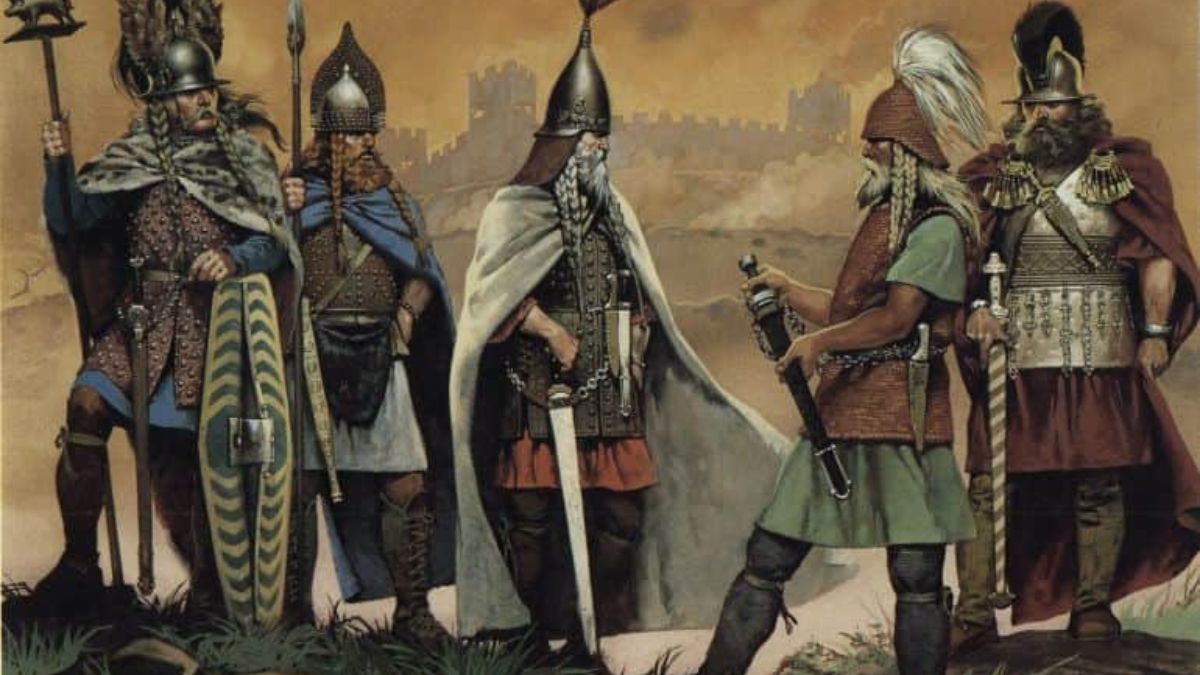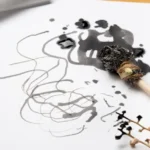Celtic warriors were famed in antiquity for their fierceness and valor in the battlefield. Celtic culture extended from its heartland in central Europe throughout the rest of the continent, touching countries as far apart as Spain and Turkey, Britain and the Balkans.
Learn more about the Celtic warriors and their culture as we examine their weapons, strategies, and beliefs.
The Celtic People: Their History and Culture
The Celts were a loose confederation of ethnic groups who spoke a common language and shared a common culture but did not have a central government or leader. Their society was hierarchical, with kings and nobles at the pinnacle, and they excelled at a variety of trades, including weaving, farming, and commerce.
The Celtic Warrior class supported the rest of society and was held in the highest esteem for their valor and skill in battle. They began learning the skills of war at an early age, honing their abilities in wrestling, boxing, swordplay, and archery.
Celtic War Gear: Weapons and Armor
Celtic warriors were famous for their unique and aesthetically pleasing weapons and armor. Long swords, spears, and javelins were among their weapons, along with slings, bows, and arrows. Their bronze or iron helmets, shields, and body armor were easily identifiable.
Their long, curved blades were perfect for slicing and thrusting, making their swords particularly stunning. Some Celtic blades were elaborately adorned to show off their owners’ riches and social standing.
Celtic military strategy and tactics
Individually and as a unit, the Celtic Warriors were formidable. Depending on the terrain and the enemy, they employed a number of strategies, the charge being the most prevalent. They’d get into a tight formation and charge the opponent, slashing and stabbing with deadly efficiency.
In addition to being experts at using the local topography to their advantage, they were also adept at ambushes and surprise attacks.
Celtic Warrior Religion and Beliefs
The religious beliefs of the Celtic Warriors were integral to their daily life and military endeavors. Before going into war, they would offer sacrifices to their many deities.
Morrigan, the goddess of war, was their most renowned deity, and she was often depicted as a crow or raven on the battlefield. Celtic warriors revered and dreaded her because they believed she had the power to bring either triumph or defeat.
Celtic Heroes’ Lasting Impact
The Celtic Warriors were a powerful group in ancient Europe, and their legacy lives on in the Celtic peoples’ mythology, literature, and visual arts. The works of contemporary artists, writers, and filmmakers continue to pay homage to their past and culture.
The Celtic Warriors were formidable foes on the battlefield, but they were also fiercely devoted to their families and villages. They formed partnerships with other tribes to increase their strength and fought ferociously to defend their people and way of life.
Beautiful jewelry, ceramics, and other ornamental items were made by them and highly prized because of their culture’s reputation for creativity and skill. Their history and mythology were passed down orally from generation to generation by bards and storytellers.
Celtic culture was absorbed into the greater European culture after its people were defeated by the advancing Roman Empire. Their impact, however, lives on in the modern customs and traditions of the Celtic peoples.
Recent years have seen a resurgence of interest in Celtic Warrior heritage and history, with many people learning about and honoring their ancestors’ accomplishments. This curiosity has increased our familiarity with Celtic culture and contributed to the preservation of ancient customs and values.
Celtic Warrior Culture and Its Aftermath
Celtic influence can be found in many areas of contemporary culture, from writing and art to music and sports. Celtic motifs in modern art and design and the widespread adoption of Celtic-derived sports like rugby and football (soccer) are only two examples of the Celts’ enduring cultural impact.
Creativity and Wordcraft
The intricate knotwork and striking patterns of Celtic art have been an inspiration for artists for ages. Many modern artists and designers have been inspired by Celtic aesthetics, which can be seen in anything from jewelry to ceramics.
Celtic myths and folklore have served as literary fodder for generations. Celtic mythology and legends have impacted many works of fiction, including those about King Arthur, the Round Table, and the Welsh hero Taliesin.
Cultures of Performing Arts
The music and dance of the Celts have also had a major impact on contemporary society. The world over is enamored with the evocative melodies and exuberant dance songs of traditional Irish and Scottish music. Artists as diverse as Enya, Loreena McKennitt, and Clannad have incorporated Celtic music into their own styles of modern pop and rock.
Sports
Celtic traditions inspired the creation of popular sports like rugby and football (soccer). Celtic peoples invented the games, but now people all across the world enjoy them. The United Kingdom and Ireland are two countries where rugby is practically a national pastime.
Conclusion
Celtic warrior culture left an indelible mark on fields as diverse as literature, music, and sports. The Celts were extraordinary people who made a significant imprint on European history. Their history is a tribute to the potential of human resolve and perseverance, and it continues to inspire and captivate people to this day because of their bravery, talent, and commitment.











